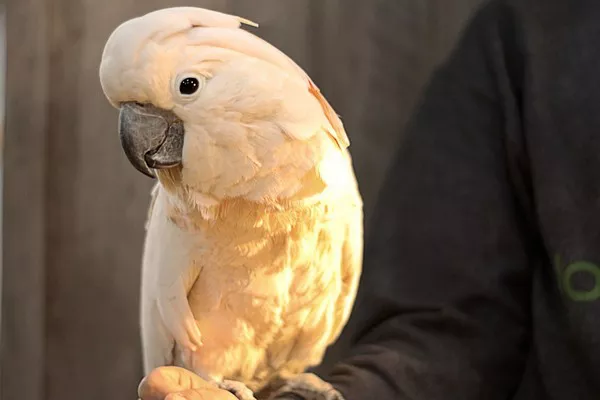Bettas, also known as Siamese fighting fish, have long been celebrated for their vibrant colors and elegant fins, but they are equally famous for their reputation for aggression. Plakat bettas, a specific variety of the betta species, are often singled out when discussing aggression due to their unique appearance and behavior. But are plakat bettas really more aggressive than other types? In this article, we will explore the temperament of plakat bettas, compare them to other betta varieties, and examine the factors that influence their aggression. We will also provide tips for keeping plakat bettas in a healthy and peaceful aquarium environment.
What Are Plakat Bettas?
Before diving into their aggression levels, it is important to understand what plakat bettas are and how they differ from other types of bettas. The term “plakat” refers to a specific tail type of the betta fish. Plakat bettas have shorter, more compact fins compared to the long, flowing fins of the more common betta varieties like the halfmoon, crowntail, or veil tail bettas. The shorter fins give them a more streamlined appearance, which is often associated with enhanced swimming abilities.
The plakat betta’s name originates from the Thai word “plakat,” which means “biting fish,” reflecting the aggressive nature of these fish in their natural habitats. The primary difference between plakat bettas and their long-tailed counterparts is in their morphology, with the plakat variety being bred to have more muscular bodies and shorter fins. While these physical traits make plakat bettas excellent fighters, their aggressive tendencies can vary depending on a range of factors.
Are All Bettas Aggressive?
To understand whether plakat bettas are more aggressive than other bettas, it is crucial to consider the aggression levels of bettas in general. Bettas are territorial fish, and their natural instincts often lead to aggression. In the wild, bettas live in dense, highly competitive environments such as rice paddies and shallow waters in Southeast Asia. They protect their territory aggressively to defend resources, such as food and breeding space.
In captivity, bettas display similar behaviors, but the level of aggression can vary based on the individual fish, its environment, and the species. All bettas, including plakat bettas, are generally solitary fish and do not tolerate the presence of other male bettas. Male bettas will fight if placed in close proximity to one another, with the fights often resulting in injury or even death. However, not all bettas are equally aggressive. While some are more docile and tolerant, others may display more intense aggression.
Are Plakat Bettas More Aggressive Than Other Bettas?
When it comes to comparing the aggression of plakat bettas to other betta varieties, the answer is not straightforward. On one hand, plakat bettas are often considered more aggressive than long-finned bettas due to their physical build and evolutionary history. On the other hand, there are multiple factors that influence aggression levels in individual fish, making it difficult to generalize across the entire breed.
1. Physical Characteristics
One of the main reasons why plakat bettas are often seen as more aggressive than other bettas is their physical characteristics. As mentioned earlier, plakat bettas have shorter fins and a more compact body compared to their long-finned relatives. These physical traits make plakat bettas faster swimmers and more agile in fights. Their compact bodies also give them a muscular build, which may contribute to their ability to fight more efficiently and assertively.
In contrast, bettas with long, flowing fins are more vulnerable during fights. The long fins may slow them down, making them less able to defend themselves effectively. The shorter fins of plakat bettas are not only more functional for swimming but also better suited for aggressive encounters. In the wild, bettas use their powerful bodies to chase away rivals, and plakat bettas, with their muscular builds, are more adapted for this purpose.
2. Selective Breeding for Fighting Traits
Another factor contributing to the perceived aggression of plakat bettas is selective breeding. Bettas have been bred for various traits, including fin shape, color, and aggression. Over time, breeders have focused on enhancing the fighting abilities of bettas, particularly in Thailand, where betta fighting has been a traditional sport. Plakat bettas, with their shorter fins, are more commonly associated with fighting and have been selectively bred for their combative nature.
While not all plakat bettas are bred for aggression, the breeding of bettas for fighting purposes has influenced their temperaments. As a result, plakat bettas may exhibit more aggressive tendencies than other varieties that have not been bred with fighting in mind. This selective breeding has amplified their natural aggression, making them more prone to fighting and territorial behavior.
3. Socialization and Environment
The environment in which a betta lives plays a significant role in its aggression levels. Bettas are territorial fish, and when they feel their territory is threatened, they may become more aggressive. In captivity, it is essential to provide a space where bettas feel safe and secure. If a betta is kept in a small, overcrowded tank or in close proximity to other fish, it may become stressed and more likely to display aggressive behavior.
Plakat bettas, with their fighting instincts, may be particularly sensitive to environmental factors that trigger aggression. For example, when placed in a tank with too many other fish or with other male bettas, plakat bettas may feel the need to assert dominance and engage in aggressive behavior. However, when kept in an appropriate environment with enough space and resources, plakat bettas can live peacefully and exhibit less aggression.
4. Individual Variation
Just like any other species, individual bettas can vary in terms of their temperament. While some plakat bettas may be highly aggressive, others may be more docile and tolerant. It is essential to recognize that aggression is not solely determined by the breed or tail type of the betta but is influenced by factors such as genetics, early socialization, and individual personality.
Some bettas, whether plakat or long-tailed, may exhibit a more laid-back disposition, while others are naturally more aggressive. Even within the plakat variety, there can be a wide range of temperaments, and not all plakat bettas will engage in frequent or violent fights. The aggression of a plakat betta may be influenced by its upbringing, experiences with other fish, and how it is cared for in captivity.
Factors That Influence Aggression in Plakat Bettas
There are several factors that can affect the aggression levels of plakat bettas. These factors can include genetic predisposition, environmental conditions, and the betta’s interactions with other fish. Understanding these influences can help you provide a better environment for your plakat betta and reduce the likelihood of aggression.
1. Genetics
As with any animal species, genetics plays a crucial role in determining a betta’s temperament. Some plakat bettas may inherit a more aggressive nature from their ancestors, while others may have more passive genes. Although genetics is not the only factor influencing aggression, it can significantly impact a betta’s behavior.
2. Tank Size and Space
A cramped or overcrowded tank can increase aggression in plakat bettas. When fish are confined to a small space, they may feel more threatened and territorial, leading to aggressive behavior. It is essential to provide a tank that is large enough for the fish to establish their own territory and move around freely. A general rule of thumb is to provide at least 5 gallons of water per betta to ensure they have enough space.
3. Tankmates
Tankmates can also play a significant role in the aggression levels of plakat bettas. Bettas are known to be aggressive toward other males, and male bettas should never be kept together in the same tank. Even other fish that resemble bettas, such as other labyrinth fish or those with long fins, can trigger aggression in a plakat betta. It is best to house plakat bettas in a single-species tank or with peaceful, non-aggressive tankmates.
4. Stress
Stress can exacerbate aggression in plakat bettas. Environmental stressors such as poor water quality, inadequate filtration, or sudden temperature changes can lead to increased aggression. It is essential to maintain optimal water conditions in the tank, with a consistent temperature of around 76–80°F (24–27°C), and to perform regular water changes to keep the fish healthy and reduce stress.
5. Breeding Conditions
When male bettas are in breeding condition, their aggression levels can increase. During the breeding season, male bettas become highly territorial and may exhibit more aggressive behavior. If you are breeding plakat bettas, it is essential to separate the males and only allow them to interact with females during the breeding process. Once the breeding is complete, the male and female should be separated to prevent aggression.
How to Manage Aggression in Plakat Bettas
While aggression is a natural behavior for plakat bettas, there are steps you can take to minimize conflicts and keep your fish healthy and happy. Here are some tips for managing aggression in plakat bettas:
1. Provide a Spacious Tank
To reduce territorial aggression, ensure that your plakat betta has plenty of space to roam. A minimum of 5 gallons of water is recommended for a single betta. A larger tank can help to reduce stress and aggression, as the fish will have enough room to establish its territory without feeling crowded.
2. Avoid Keeping Male Bettas Together
Male bettas are extremely territorial, and they will fight if housed together. It is important to never place two male bettas in the same tank, even if the tank is large. If you want to house multiple bettas, you can either choose to keep females or use a divided tank to separate males.
3. Use Peaceful Tankmates
If you want to add other fish to your betta tank, make sure they are compatible. Peaceful, non-aggressive species such as neon tetras, Corydoras catfish, or snails are good choices. Avoid species with long, flowing fins or other bettas, as these can trigger aggression in plakat bettas.
4. Create Hiding Spots
Plakat bettas, like all fish, need places to hide and retreat when they feel stressed. Adding plants, caves, and other decorations to the tank can provide hiding spots where your betta can retreat when it feels threatened. This will help reduce aggression by giving your betta a safe space.
5. Maintain Water Quality
Clean, high-quality water is essential for a healthy betta. Regular water changes, proper filtration, and monitoring water parameters (such as pH, ammonia, nitrite, and nitrate levels) will help to reduce stress and aggression. Bettas thrive in water with a pH of 6.5–7.5 and a temperature of 76–80°F (24–27°C).
Conclusion
Plakat bettas are not inherently more aggressive than other types of bettas, but their physical traits, breeding history, and territorial instincts can make them appear more combative. While they may be more agile and efficient fighters due to their shorter fins and muscular bodies, their aggression is influenced by multiple factors, including genetics, environment, and interactions with other fish. By providing a suitable environment, maintaining optimal water conditions, and choosing the right tankmates, you can manage aggression in plakat bettas and help them thrive in your aquarium.
In summary, plakat bettas may be more aggressive than other bettas due to their genetic background and selective breeding for fighting traits. However, with proper care, their aggression can be managed, allowing them to live peacefully in a well-maintained tank. The key to keeping any betta, including plakat bettas, is understanding their natural behavior and providing an environment that supports their well-being. By following these guidelines, you can enjoy the beauty and personality of your plakat betta while minimizing conflicts and ensuring a harmonious aquarium.
Related Topics:
























